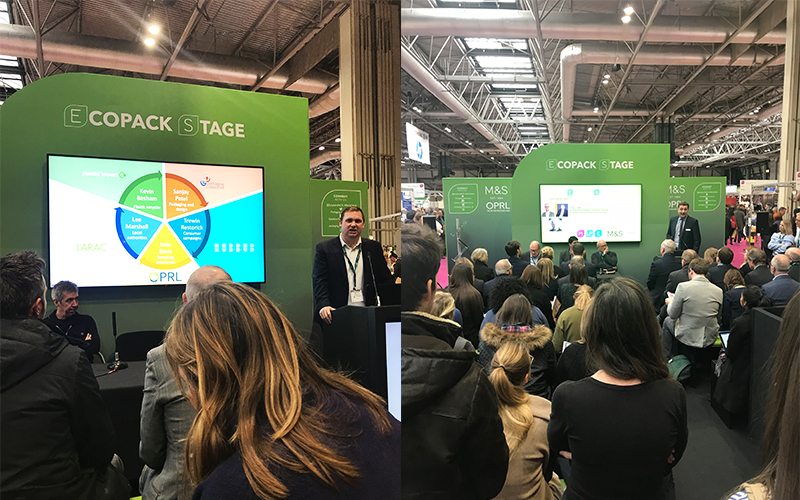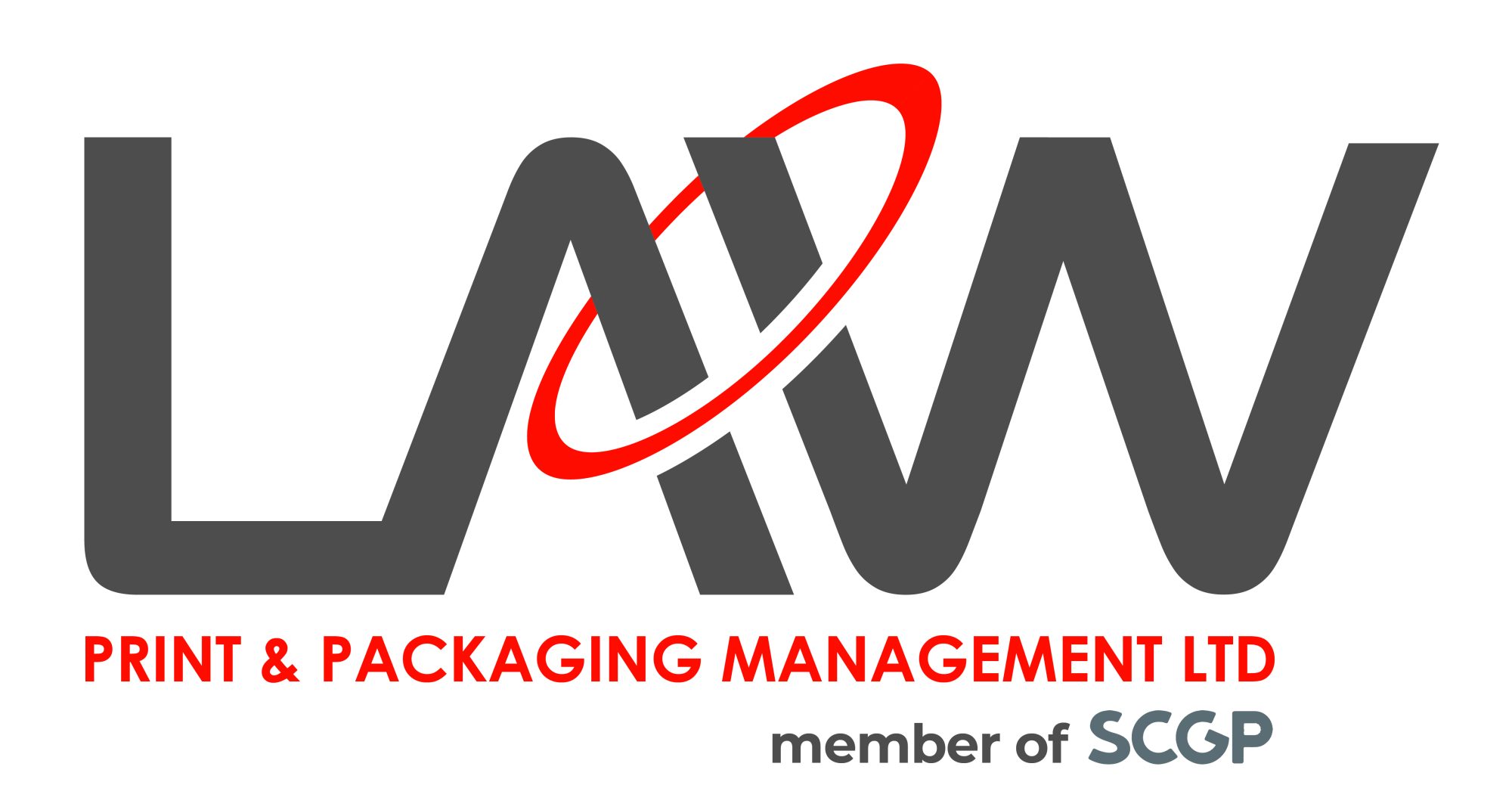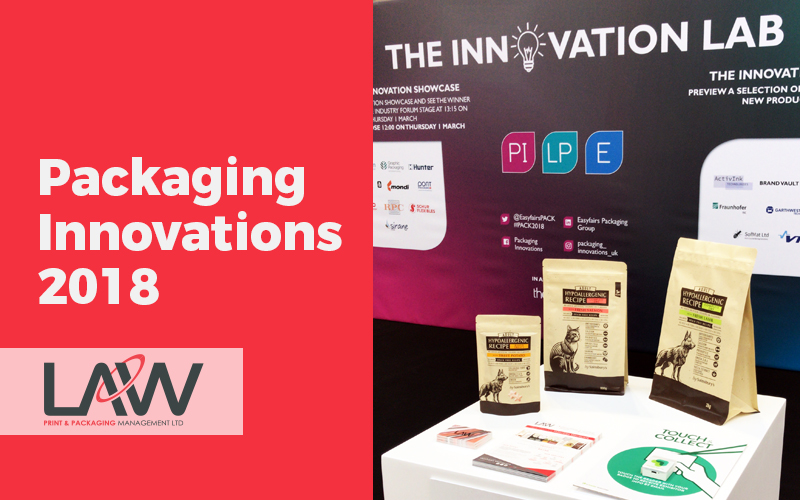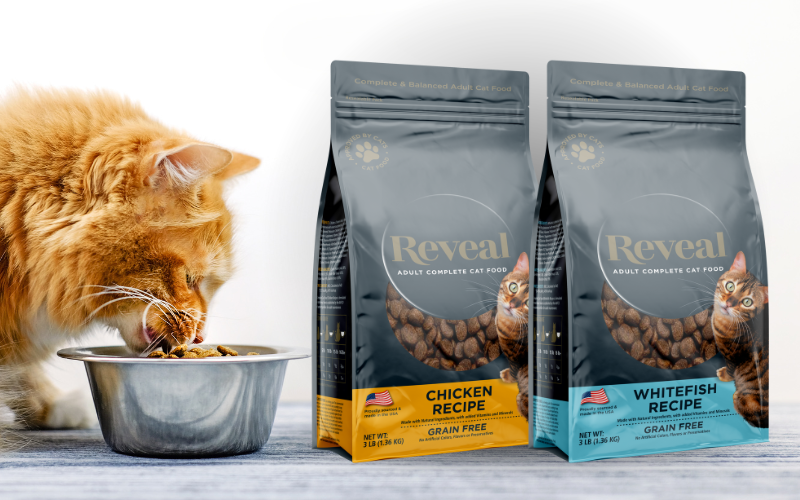Our team braved the snowy weather and made it down to Birmingham for Packaging Innovations 2018.
As well as showcasing our latest multi-sensory packaging finish at the Innovation Lab, we managed to drop in on some key seminars to see how the industry has reacted to the war on plastics.
The Innovation Lab
Our latest project was selected by the Packaging Innovations team to be showcased at the Innovation Lab, amongst a selection of cutting-edge new products. The application of textured (haptic) varnish to flexible packaging creates a unique, multi-sensory packaging experience. Attending the show was a great chance for our team to gain some feedback on the new finish from brands, retailers and customers alike. To learn more about the new haptic varnish finish follow this link to the blog.
How to tackle the plastics problem?
As a plastic packaging supplier, it’s been interesting to see the flurry of new materials and formats driven by the mass media attack on plastics. From suppliers, converters and printers the messaging is mixed and solutions are varied.
Compostable and biodegradable packaging was a key buzzword, asked for by visitors, discussed by speakers and repeated across exhibitors stand messaging. To many people, from brands to end consumer, compostable and biodegradable materials are the most widely understood and sought-after form of ‘sustainable packaging.’

From walking the show, it was clear the industry faces an issue of how to define and educate our customers on the different ways we make packaging more sustainable. Designing for optimisation, reducing material usage, lightweighting and investing in recyclable plastics can all improve your company’s commitment to sustainability without compromising the quality of your product and shelf life.
Some speakers argued that the introduction of compostable and biodegradable packaging should be seen as a red herring and somewhat short-term fix, to patch wider issues with UK’s infrastructure and ability to dispose of waste responsibly. At end of life, for the majority of new compostable packaging solutions, the material must be sent to an industrial facility, rather than the widely believed misconception that they can be composted at home. There is also no assurance that the consumer has disposed of this correctly, as recycling messaging is often confusing and dependant on local authorities. So, after all these good intentions, the package could still end up in a landfill.

The ‘Recycling Panel’ on Thursday afternoon made some great arguments for the wide-ranging benefits of plastics and their positive contribution to the food supply chain. Rather than villainising a material that in fact prolongs shelf life, protects produce in transit and prevents unnecessary food waste, it’s important to focus on driving more cohesion in recycling and educating consumers through signposting initiatives from organisations such as OPRL.
Almost everything can be recycled, even if it must be burnt to provide energy, it should still have a positive use at end of life, but the current recycling infrastructure in the UK makes this difficult, if not impossible.
One of the main takeaways for us was the importance of a coherent and clear message from all the industry. As a packaging supplier, we believe we have a duty to communicate honestly and transparently with our customers exactly what is possible for their packaging in today’s climate.
Subscribe to our newsletter for all the latest packaging news and insights


